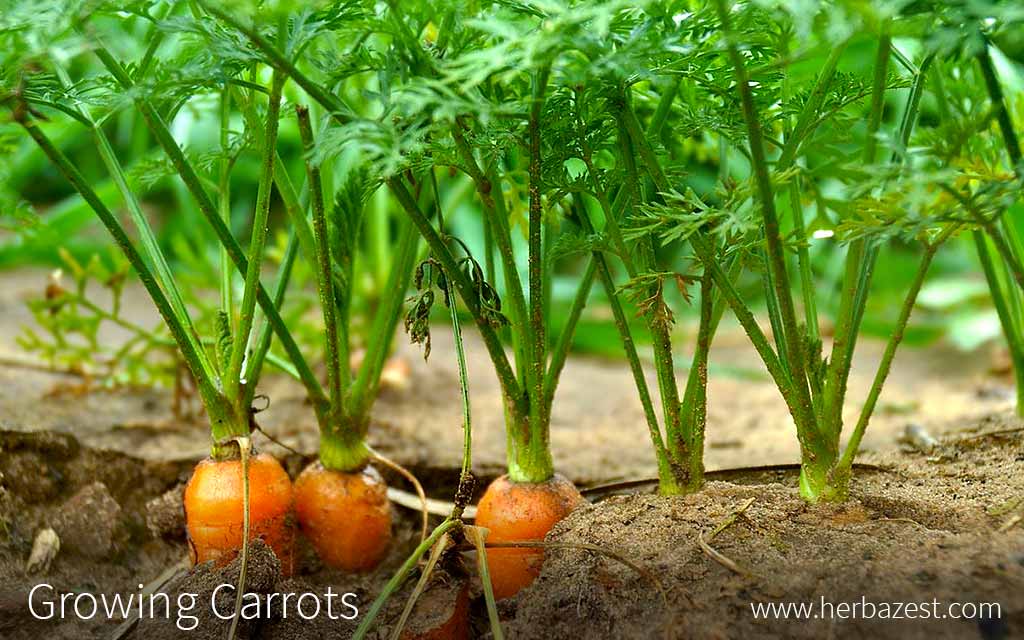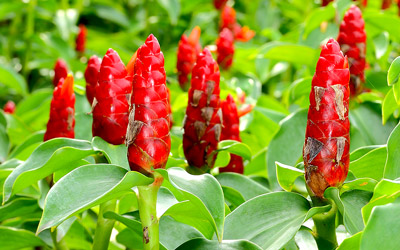Carrots are widely preferred by both beginners and experienced gardeners because of their popularity as nutritious vegetables and their hardiness. However, in order to succeed in their cultivation, a number of factors, such as temperature, type of soil, and water requirements should be considered. The following growing guidelines offer valuable information about how to plant and take care of carrots in a home garden.
1. Preparing the Soil
When growing carrots, it is very important to meet the proper soil conditions. Because carrots are root vegetables, they require deep, loose soil that should be moist but also well-draining.
Before planting carrots, it is recommended to perform a nutrient and pH analysis of the soil and amend it as needed with fertilizer or organic matter. Fresh manure should be avoided, as it may cause the carrot root to branch, thus compromising the quality of the crop.
The soil should be loosen to a depth of 8 - 12 inches (20 - 30 cm) and all rocks and large pieces of plant material must be removed to make room for the carrots to grow comfortably. In areas with poor drainage, it is advised to mound the soil to create ridges for planting the carrot seeds. This will allow for better air and water circulation, promoting a healthy crop.
2. Planting
Planting Carrots Outdoors
Plant carrots in the early spring, as soon as the danger of frost has passed and the soil can be easily worked. Seeds should be planted at a depth of half an inch (1.3 cm) and the same distance apart.
Carrots germinate very slowly, and it will usually take between one to three weeks for above-ground sprouts to appear. Once the plants have reached four inches (10 cm) in height, thin the stand to accommodate a spacing of one to four inches (2.5 - 10 cm). Thinning the stand will allow for less competition between plants. Moreover, at this point, some of the carrots may be large enough to eat. For a continuous supply of carrots, sow additional plants every three weeks for a late fall harvest.
Because of the slow germination rate of carrots, many gardeners will sow radishes alongside carrots in order to mark the rows and break the soil crust.
3. Plant Care
Watering
It is important that carrots receive approximately one inch (2.5 cm) of water per week during the growing season, especially during the summer. Since shallow watering will do little to promote root development and may result in crop stress, be sure to thoroughly wet the soil, not just the surface. In addition, depending on the soil type, carrots may need additional watering, as sandy soils tend to drain faster than clay soils.
Fertilizing
A soil test should always be performed before fertilizing to see how the soil should be amended. Otherwise, it is recommended to apply a 5-10-10 fertilizer at a rate of 30 pounds per 1,000 square feet (46 kg per km2). If carrot is planted in a sandy area, it may be necessary to add more fertilizer occasionally throughout the growing season.
It is recommended to mix well-composted organic material into the soil before planting. However, do not mix fresh manure into the soil, as it may stimulate weed growth and cause the carrot roots to branch.
Weed Control
It is recommended to mulch the growing area in order to conserve soil moisture. Moreover, carrots germinate and grow best under cool conditions, and mulching over the area will help to keep the soil cool and protect the exposed top of the carrot root. If the top of the carrot receives too much sunlight, it may turn green and taste bitter.
4. Pest & Disease Control
Pests
A common pest that may affect carrots is the carrot root fly, which is actually a maggot that feeds on the roots. Carrot root flies are best controlled by harvesting carrots as soon as possible. It is not recommended to apply an insecticide directly to the carrot root. However, it is possible to apply a soil insecticide prior to planting.
Another pest that can damage a carrot crop is the flea beetle, which chews holes in carrot leaves and often spreads diseases among the crop. To control these and other flying insects, it is recommended to use a floating row cover that provides a barrier to insects while still allowing light and rainfall to reach the plants. Some organic and synthetic insecticides are available, but should always be used with care.
Diseases
Carrots may be susceptible to leaf spots caused by fungi. If leaf spots occur, apply an approved fungicide. In order to prevent fungal infection year after year, be sure to rotate crops appropriately, do not overwater, and plant carrots in well-draining soil.
5. Harvest
Carrots are typically harvested two to three months after planting, when the root has reached a diameter of 0.5 - 0.8 inches (1.3 - 2.0 cm). To make harvesting easier, use a spade to loosen the soil around the carrots, or soak the ground with water. Grasp the carrot at the crown of the greens and gently twist and tug the carrot out of the ground at the same time.
6. Storage
To store carrots, thoroughly wash the root to remove any dirt or debris. Cut the root approximately one inch (2.5 cm) from the crown. Store carrots at 32°F (0°C) in a space with high humidity, such as a refrigerator. When kept at the proper temperature and humidity, carrots can be kept for four to six months.





